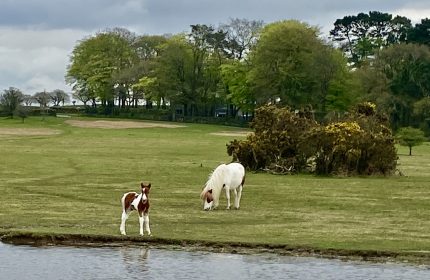Caring for your garden wildlife
Although some birds will have been breeding for several months, it’s from now onwards that the presence of young birds starts to become obvious.
Flocks of juvenile Starlings, Blue Tits and Great Tits create an insistent, almost continuous chorus of calls, while scruffy looking young finches and sparrows suddenly appear on feeders and bird tables.
You can help the young birds to survive the crucial first few weeks out of the nest by giving them a good quality, sunflower heart-based food to keep them healthy as they learn to live independently. Providing mealworms, either alive or dried, is another great way to help them, and both foods will also be appreciated by adult birds, many of which will be busy with another brood of young birds. Providing a healthy supplementary food allows the adults to have a quick feed before concentrating on finding natural food for their youngsters.
This is also a busy time for hedgehogs, as mothers give birth and prepare the young to leave the nest and start foraging in the wider countryside. Many people first realise they have hedgehogs in the garden when they notice them feeding on bird food. A good quality hedgehog food designed with their needs in mind, along with a supply of mealworms, is even better, and a big improvement on bread and milk, which can make them ill.
Birds, hedgehogs and all the other wildlife in your garden will be helped if you garden in sympathy with nature. This doesn’t mean turning your plot into a wilderness, but areas of unmown grass, a pond with sloping rather than sheer sides, and reducing the use of chemicals as much as possible will all help to increase an area’s wildlife value.
The plants you choose can also help to encourage more wildlife by providing food and shelter. Ice plant, buddleia and yarrow are great for attracting pollinating insects like butterflies and hoverflies, and if you plant honeysuckle or night scented stock you will also attract moths and, in turn, bats. Hoverfly larvae will eat lots of aphids and pipistrelle bats can eat 3,000 midges in an evening, so it’s not just slug-eating hedgehogs that earn their keep in the garden!
Teasel, sunflower and lemon balm are great sources of seeds for birds later in the year and many berry bearing shrubs, plants like pyracantha, barberry or cotoneaster also provide excellent cover for nesting and roosting. Ivy is also well worth encouraging as it’s shelter provides an excellent hibernation site for many insect species, as well offering an important late source of nectar and pollen, and berries are loved by birds right through the winter.
CJ Wildlife has a wide range of products to help the wildlife out in your garden this year. For products details and more information please visit www.birdfood.co.uk or Freephone 0800 731 2820
ADVERTORIAL






















